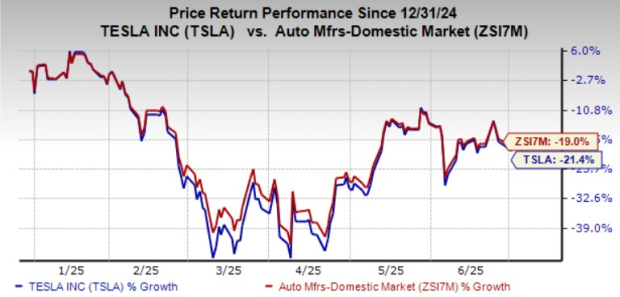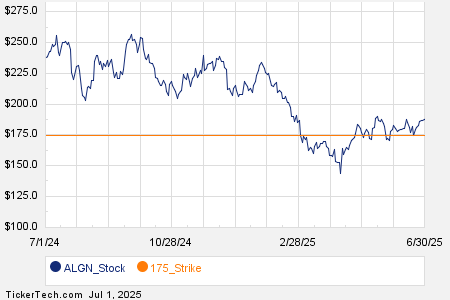Rivian (NASDAQ: RIVN) turned in mixed first-quarter results. The electric vehicles (EV) maker’s vehicles continue to be popular, but the company continues to sell them below the cost of making them. Given this, the company not surprisingly is burning a lot of cash as it loses money on every vehicle it sells.
Let’s take a look at Rivian’s most recent quarterly results, what the company is doing to improve its operational performance, and its current cash position.
Mixed quarterly results
Rivian saw its Q1 revenue surge 82% year over year to $1.2 billion as the company delivered 13,588 vehicles in the quarter, a 71% increase compared to a year ago. It produced 13,980 vehicles — a 49% increase from a year earlier.
The company’s 2024 R1S, a three-row luxury SUV, was the best-selling EV in the U.S. priced at over $70,000. Overall, the company was the fifth best-selling EV maker in the U.S. with just over 5% share.
The company reiterated its forecast to produce 57,000 vehicles this year.
The problem for the company is that it sells its vehicles for much less than it makes them. During the quarter, it sold its vehicles for $38,784 less than the cost to make them. Note that this is before any costs associated with selling the vehicles, as well as any corporate or research and development costs. Rivian said that this number was negatively affected by costs related to new technology changes to the tune of $9,346 per vehicle delivered.
Overall, Rivian posted a negative gross profit of $527 million and an operating loss of $1.48 billion. Adjusted earnings before interest, taxes, depreciation, and amortization (EBITDA) came in a negative $798 million.
Rivian is doing a good job of selling its vehicles and growing its business. However, under its current cost structure, the business is not viable.
Cash drain
When a company sells its products below the cost to make them, it is going to lead to a lot of cash burn. Rivian saw operating cash outflows of $1.26 billion in the quarter. It spent another $254 million in capital expenditures (capex), bringing free cash flow (FCF) to negative $1.51 billion in the quarter.
The company ended the quarter with $7.86 billion in cash and short-term investments. It also was carrying $4.43 billion in debt.
At its current cash-burn rate, Rivian will run out of cash early next year.
However, it is working hard to improve its cash-flow situation. This starts with looking to reduce the costs of making its vehicles. The company just completed a retooling upgrade at its manufacturing facility that will increase its line rate by 30%. It has also made some changes in materials and moved to a zonal network architecture to reduce the number of electronic control units in its vehicles by 60%.
As a result, the company projects that it will turn a modest gross profit in Q4. It also reduced its 2024 capex guidance by $550 million, taking it to $1.2 billion, and said its expects to receive $100 million in cash incentives from the state of Illinois to help fund its plant expansion in the state.
Getting to modest gross profits should reduce its quarterly cash outflows by about $550 million. However, that is only getting the company to about a $1 billion quarterly outflow rate at the end of the year. It’s also looking for capex to rise slightly in 2025 to $1.5 billion.
While its cash-outflow problem is improving, Rivian will likely need to raise cash sometime in the second half of 2025. Rivian believes it can turn cash-flow positive when it reaches 215,000 units of annual production at its Normal, Illinois, facility, excluding growth capex for new production capabilities.
Since it already carries over $4 billion in debt, an equity raise would likely be in the company’s best interest given high interest rates. However, that will dilute current shareholders.

Image source: Getty Images.
A Rivian investment
Rivian still holds a lot of promise. It has a very popular SUV, and it is providing electric vans to Amazon (NASDAQ: AMZN) and other companies. Its products are good, but it needs to be able to scale up and profitably manufacture them. The company is also supported by Amazon, which is its largest shareholder.
This should give investors some comfort. While Rivian is burning cash, there is a strong possibility that Amazon could step in to support the company to protect its partnership and investment. This partnership with Amazon helps set it apart from many of the other newer EV start-ups.
In hindsight, Rivian likely went public too soon, and it should have waited until it was, at the very least, turning a gross profit. Given its early-stage nature, this makes an investment in the company riskier. Rivian will have enough cash to make it through this year, but this is a high-risk/high-reward stock at this point.
Should you invest $1,000 in Rivian Automotive right now?
Before you buy stock in Rivian Automotive, consider this:
The Motley Fool Stock Advisor analyst team just identified what they believe are the 10 best stocks for investors to buy now… and Rivian Automotive wasn’t one of them. The 10 stocks that made the cut could produce monster returns in the coming years.
Consider when Nvidia made this list on April 15, 2005… if you invested $1,000 at the time of our recommendation, you’d have $550,688!*
Stock Advisor provides investors with an easy-to-follow blueprint for success, including guidance on building a portfolio, regular updates from analysts, and two new stock picks each month. The Stock Advisor service has more than quadrupled the return of S&P 500 since 2002*.
See the 10 stocks »
*Stock Advisor returns as of May 6, 2024
John Mackey, former CEO of Whole Foods Market, an Amazon subsidiary, is a member of The Motley Fool’s board of directors. Geoffrey Seiler has no position in any of the stocks mentioned. The Motley Fool has positions in and recommends Amazon. The Motley Fool has a disclosure policy.
The views and opinions expressed herein are the views and opinions of the author and do not necessarily reflect those of Nasdaq, Inc.






